I’ve had a great run through the telegram chess tournament thus far. This was to be expected, as I believe I was the third seed going in, but it’s been smooth sailing for the most part. In the first round game against Zurich, I got a solid advantage in the first ten moves, and didn’t look back. In the second round, I got a huge advantage early in the opening, my opponent blundered, and that was that. In the third round, my opponent missed my blunder out of the opening, but then I played very well, and converted a winning position with a dazzling finish.

The tournament is structured in such a way that you play people with the same score. If you keep winning, as I had done, you play someone else who has only won. In my case that was the tournament organizer, Lance_da_Yooper, who is about a hundred points higher rated than myself. I had the white pieces, and spent five minutes flipping through his games with the black pieces. I noticed that he played the Sicilian predominantly after e4, and the Benoni in response to d4.
I had seen a few very nice tactical games he played in the Sicilian, so I wanted to avoid the Open Sicilian. I could play almost anything, but I debated playing the Alapin Sicilian, or going into the Benoni. I figured that, since the Benoni is a mediocre opening anyway, I shouldn’t fear the tactical complications, especially in a long time format game. Also, I noticed that someone else had already played the Alapin against him in the tournament, and he had somewhat messed up his response. I figured that he would have spent time correcting his mistakes, so it was foolish to try him in that line.
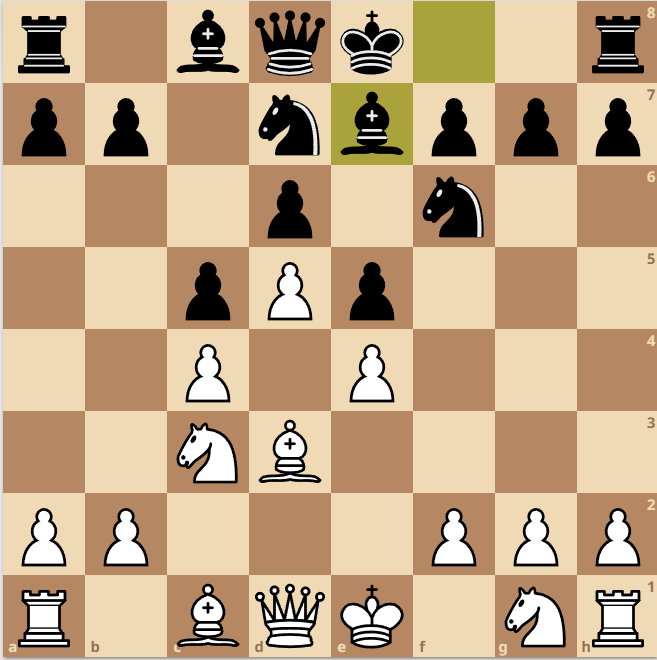
Position after six moves.
Interestingly, he told me after the game that he would have been in bad shape had I played the Alapin, since he didn’t know any theory. I barely know any theory for any opening, but the Alapin is definitely an opening where black can easily fall into many traps, or simply get a worse position. Nevertheless, I had a comfortable position out of the opening, with the above position after six moves. I considered playing f4 in this position, but I felt that I was helping him after exf4, Bxf4, since his knight has the outpost on e5. This becomes relevant later in the game.

My number one fear was having a losing position out of the opening, and I managed to avoid that. However, I was already using lots of time even before move 10. For instance, I was calculating a lot of different lines, before ultimately spending 12 minutes just to play 9. Kh1, a waiting move. Again, I didn’t want to play f4, giving him the e5 outpost, and I didn’t want to play Ng3, since I couldn’t figure out all the complications after he slots his knight into f4. It seemed unnecessary to prevent myself from playing g3 without a clear advantage, and g3 felt too early, letting his bishop slide into h3.
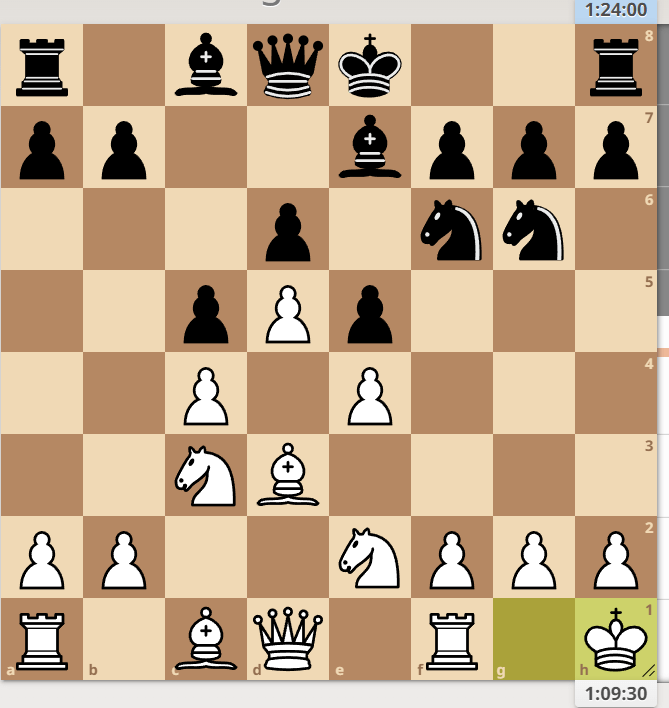
That’s one of the risks when playing an opening familiar to your opponent, but not yourself. The engine may tell you that you have a comfortable position while you’re sweating your balls off thinking that you’re getting attacked.
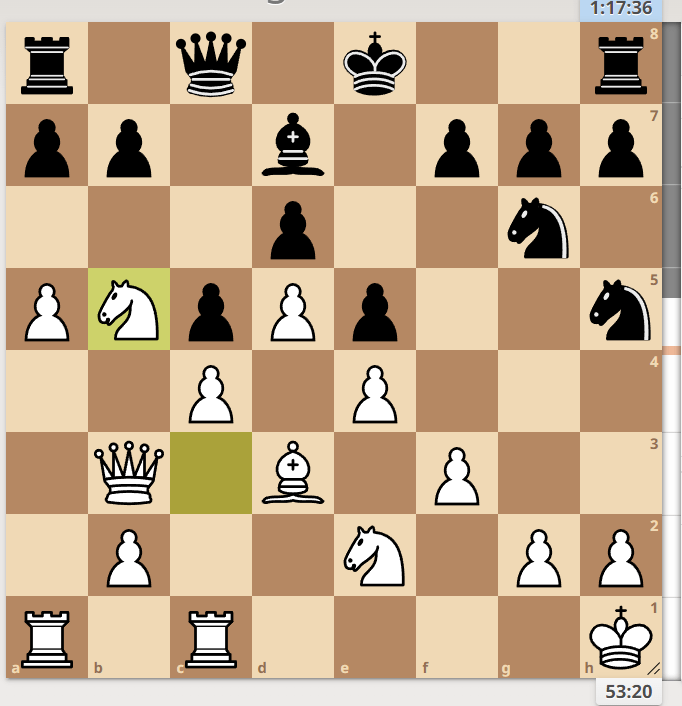
Nevertheless, I played the opening fairly well, and had a nice position after fifteen moves. In the above position I figured that Qb8 and Ke7 should both be giving me a huge advantage, maybe even winning. Qb8 mostly neuters his attack against my king, while Ke7 removes his castling privileges, and looked like it must be punishable in some way.
However, once Ke7 made its way onto the board, I realized that it wasn’t so easy to increase the pressure on his position.
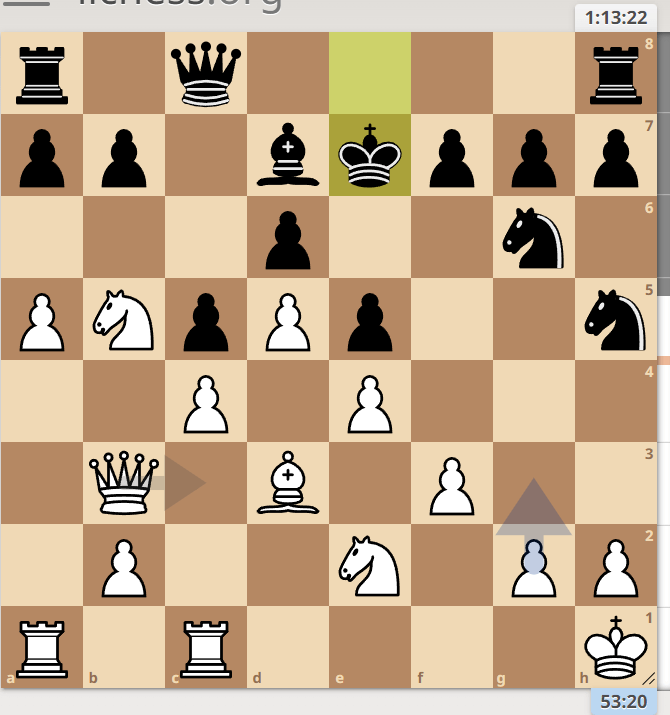
It’s difficult to coordinate an attack on the queenside. The queen needs to move before b4 is played, and it’s difficult to target the b7 or d6 pawn with anything. Also, I was very worried about a kingside attack being launched, spending a huge amount of time calculating the sacrifice Bh3, combined with the black knights swooping into f4, and the black queen coming down to h3. In the end, I started doubling the rooks on the a file with Ra3, a flexible move that helps provide reinforcement in the case of an attack. I did consider g3, the best move, but felt that I could play it with a tempi later. Boy was I wrong.
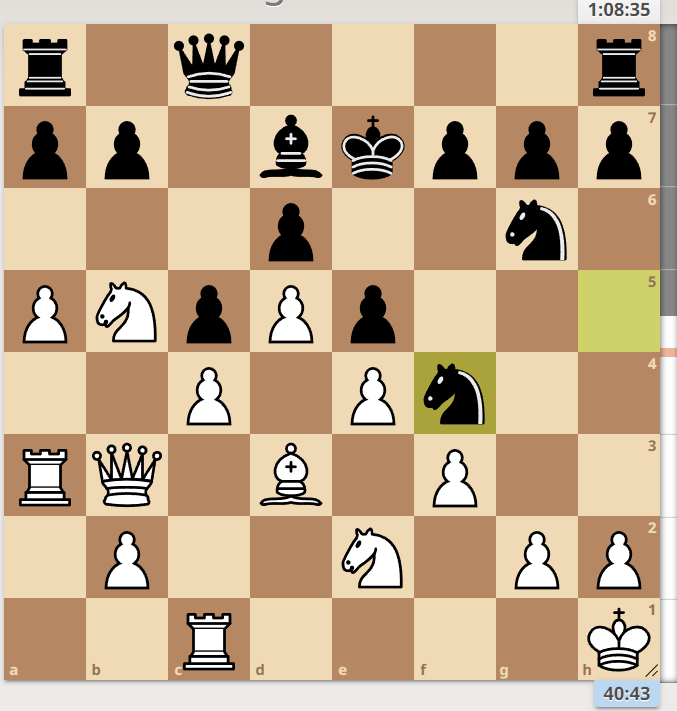
My opponent played N5f4, which I had anticipated. However, I had spent all my time calculating a very specific line that goes Nxf4, Nxf4, Bf1, and black simply does not have enough to attack the white king, at least not anytime soon. The computer agrees.
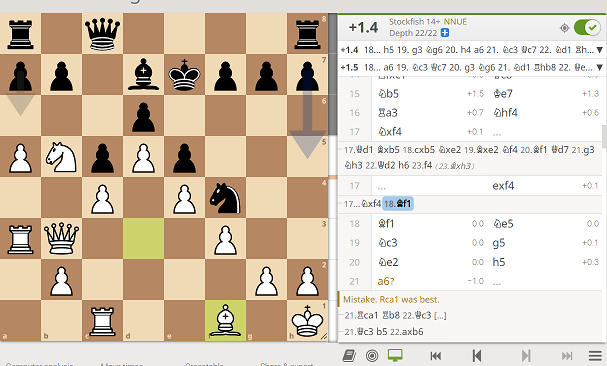
Sideline
My opponent shocked me, and not in a pleasant way, by recapturing the knight with the e5 pawn, giving himself the very juicy e5 square for his knight. I had been so focused on the attack with the knight on f4, that I hadn’t even considered the more measured, but ultimately more effective knight on e5, with the pawn on f4 now an attacker in its own right.
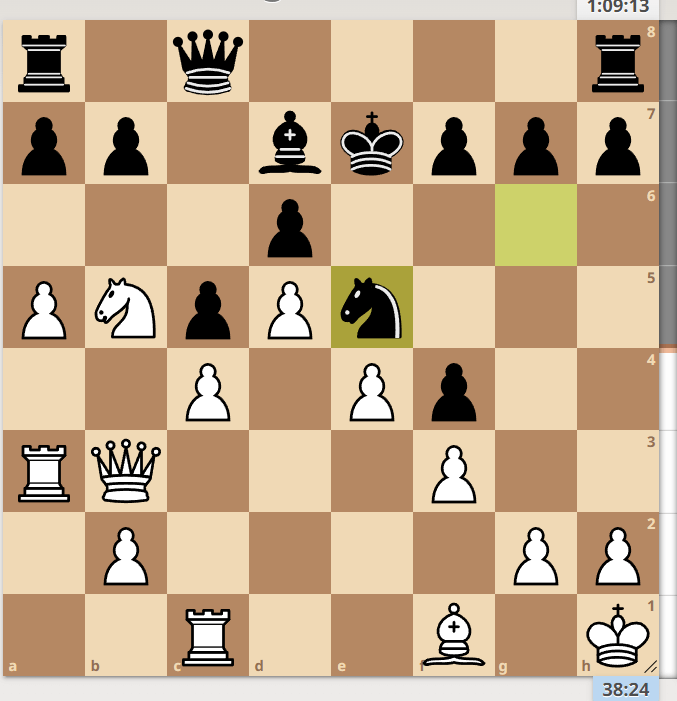
A few moves later.
The position is still fine for me, but one mistake leads to another. On move 21 I played the totally unforgivable a6? I realized that I wasn’t breaking through on the queenside, at least not immediately, and panicked with this terrible move. After b6 in response, my queenside pressure is non-existent. Black is also threatening to play b5 in some lines, and attacking with his bishop along the a6-f1 diagonal. While this was not my worst move according to the engine, it was an unforced positional blunder.

With my queenside play shut down for good, black is free to launch his attack. The computer says that I am actually doing well in this position, but that’s ridiculous. Black has huge pressure here, the engine evaluation is only true for some ridiculously hard to spot lines that both of us missed. At this point, I felt that I was losing, but the knight on e4 does offer me some tactics to hope for, in addition to some pressure on his d6 pawn again.

27. Ne4.
I felt like I had a way to stave off the attack with g3, anticipating Nf3 and using the exchange sacrifice to get some play. I was in huge time trouble, and my reasoning was more vague than I would have liked, but I saw some traps for my opponent, and felt that I was simply going to be crushed without lashing out like this. After the exchange sac I felt that I gave myself practical chances to win.
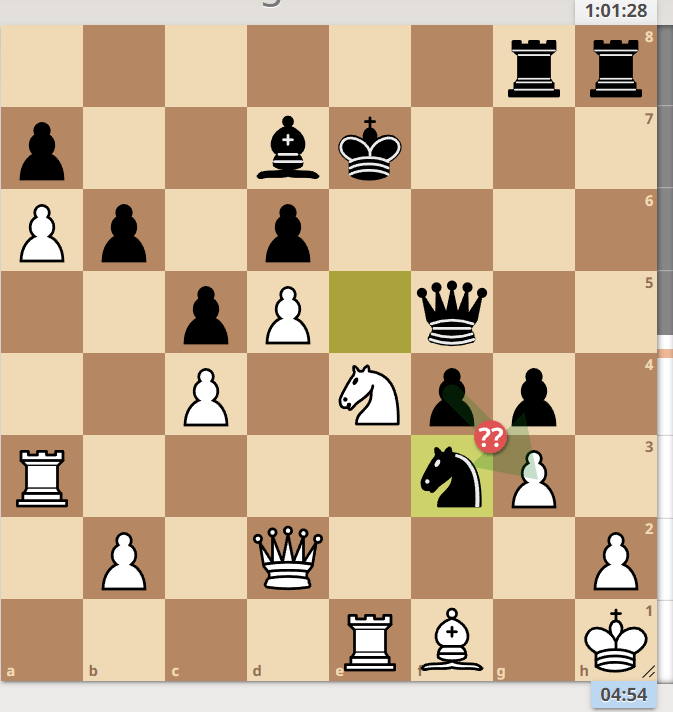
I missed the equaling continuation though, and don’t blame myself. Sadly, it’s hard to recap in this format without taking a million screencaps, but needless to say it gets extremely tactical. For example, you have to find this move from quite a distance.
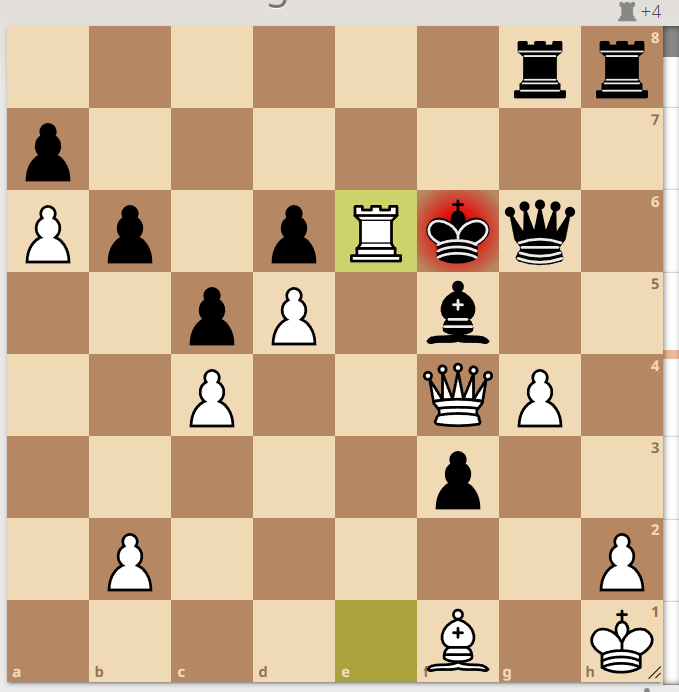
I saw that the line I played with 30. Rxg3, gxf3, gxf4 gives me some opportunities to enjoy a blunder by my opponent, and in the worst case scenario, the knight perched on g5 stops Qg1#, and the game continues. I continued playing practically, trying for countertactics, even though the engine complains.
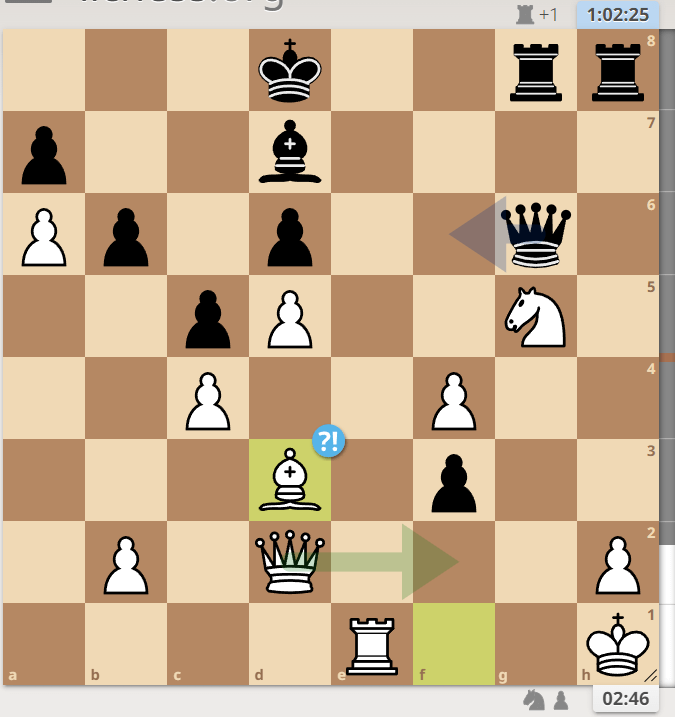
For example, Bd3 gives him the opportunity to play Bf5, trying to exchange pieces now that he’s up material. I had this nasty move prepared for him, although sadly, he played a good move instead.
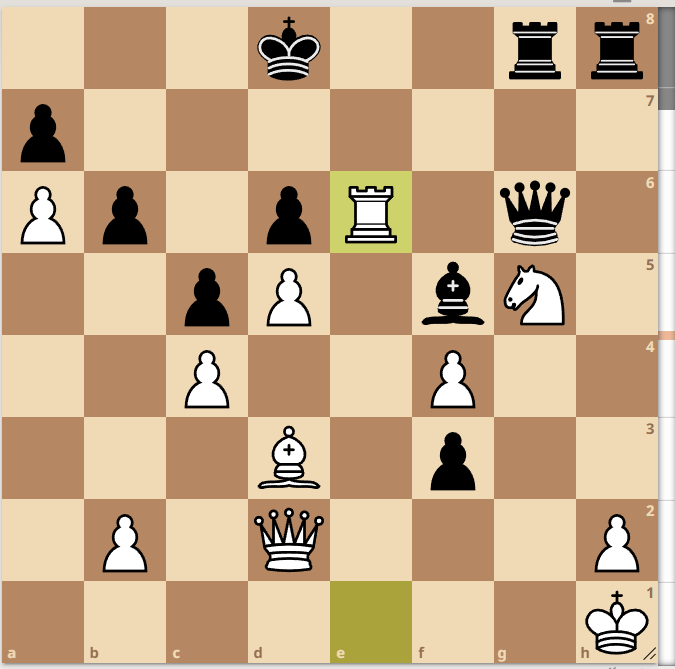
A similar pinned bishop tactic.
I was rewarded for my practical decisions, and even managed to save the game after Lance played the very questionable 38. Rhg8? Take a minute, and try to find the move which turns this game into a draw. As a hint, it might seem a touch counterintuitive, since we’re trying to swindle him.
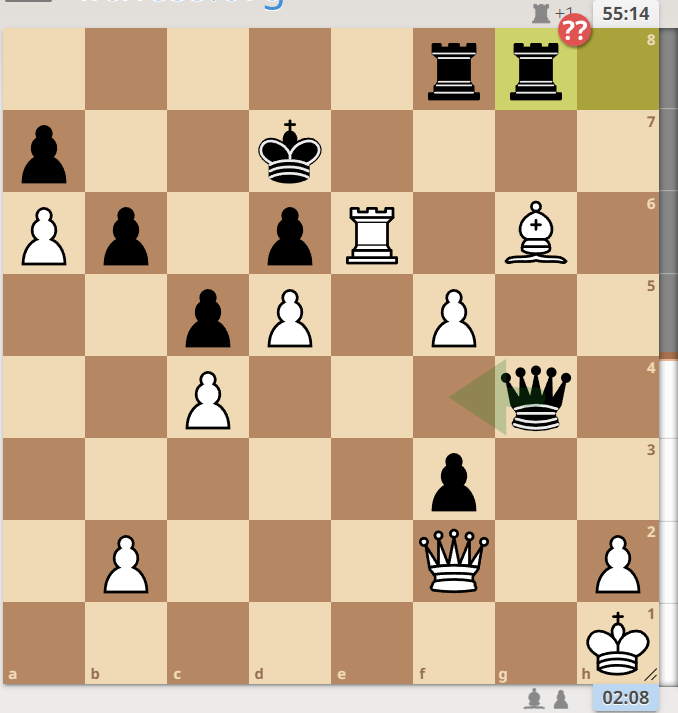
The move, played in the game, is Qg3! The computer doesn’t give this an exclamation mark, but I’ll give myself one. The queen needs to be exchanged, or I’m crashing through with Qxd6.
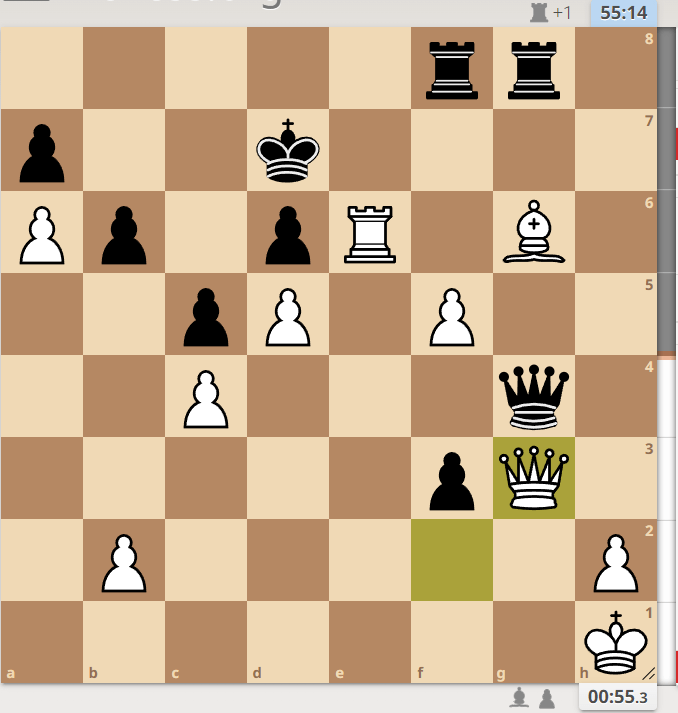
I believe Lance thought that Qg3, Qxg3, hxg3, Rxg6! works, since after fxg6 he pushes f2, and the pawn promotes. The final position in that line is this.
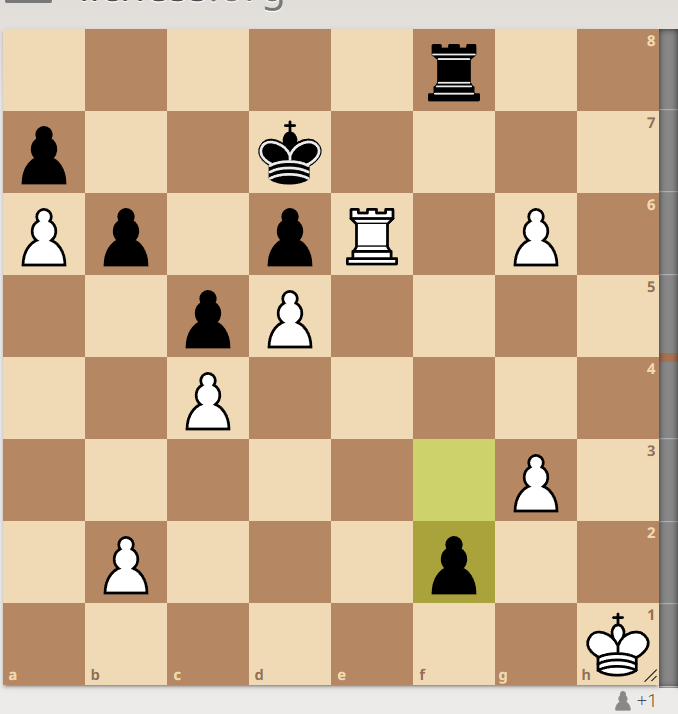
Sideline, the pawn promotes.
However, I can capture his rook with my rook and am totally winning instead. As a result, after the queens are exchanged I am simply winning the pawn on f3, and now should draw a double edged endgame. Emphasis on should…
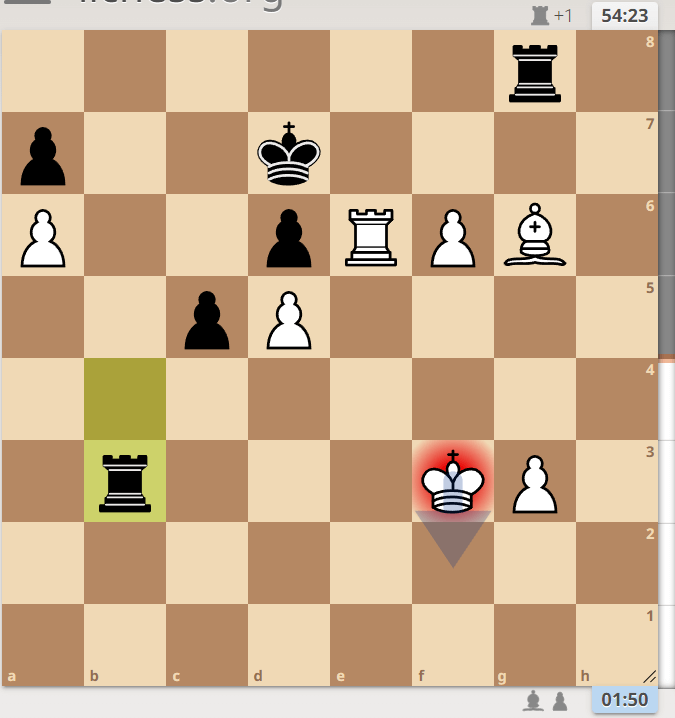
I play a very nice bishop sacrifice on move 45. He can’t take the rook (well he can and it’s a draw but you get the point) because then f7 comes, and the pawn cannot be stopped. This is correct, except I spent so much of my limited time calculating him taking the bishop and then the rook that I moved my king up the board to f4, instead of down to f2, and threw away the game.

My opponent captured the pawn on g3 with his rook on g7, and now I can’t promote because f8=Q runs into either rook checking me on the F file, and then capturing my poor, unprotected queen next move.
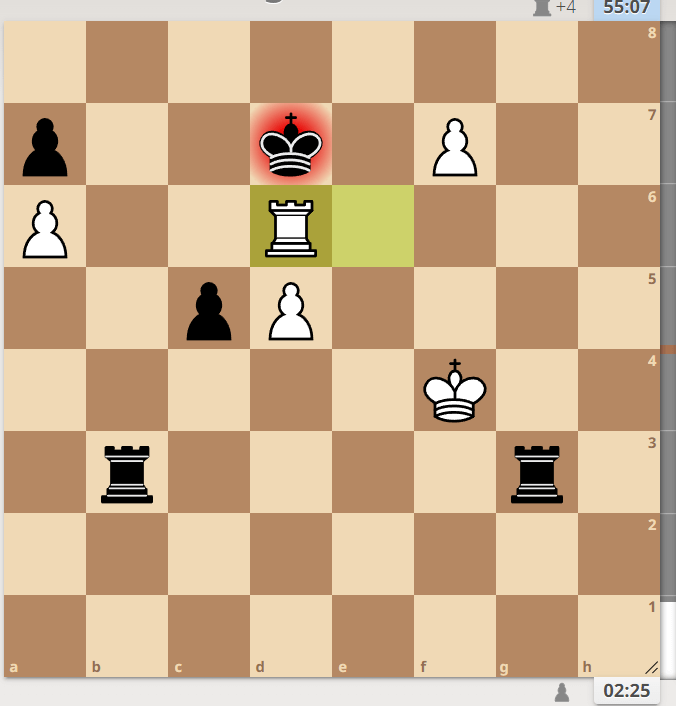
I had little left to play for other than tricks, and I tried a few. In the above position, if he captures my rook, the pawn queens. 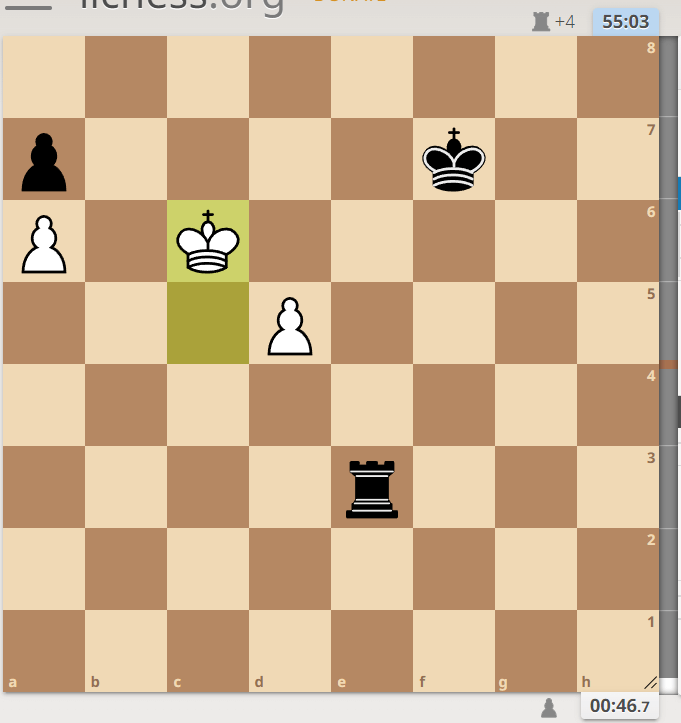
We quickly reached this fairly hopeless position, although there are stalemate ideas in the air. My last major trick was pushing the pawn to d6, where I have a drawn position if my opponent captures. Whether I would have drawn the position is another story, made moot because Lance sidestepped with his king to c6, and it’s mate in a few moves.
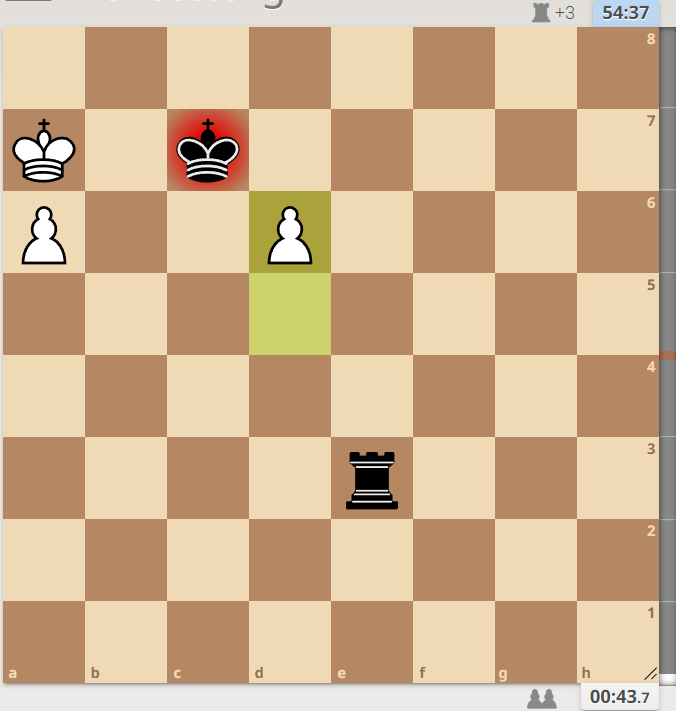
Below is the final position of the game. I tried playing Kb8, but I was a split second too slow, and lost on time. It doesn’t matter anyway, the position is completely lost, and my opponent has 55 minutes to figure out the win.
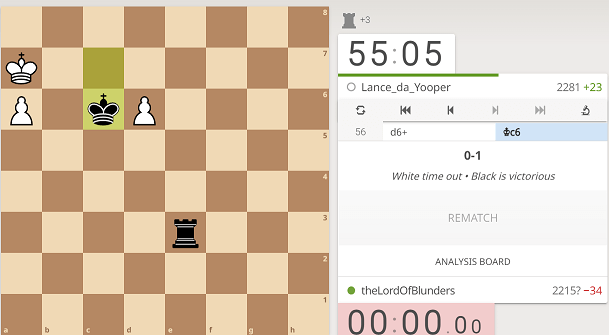
All in all, it was a great game. Positional at times, and also tactical. I’m proud of how I played with a lost position, and finding Qg3 to equalize. Playing Kf4 and missing the doubling on the third rank to throw away the draw actually doesn’t bother me too much, as it already felt like I was stealing the draw. Credit to Lance_da_Yooper for the win.
I will play the last game next week, competing for the third spot in the tournament. It’s not as exciting when you can’t win anymore, but I’ll still do my best.
















On the one hand, this was pretty interesting, as I have more of a surface level knowledge and articles about chess are usually boring and/or way over my head. This was neither.
But on the other, so very racist, you should both play a combination of white & black pieces really, smh.